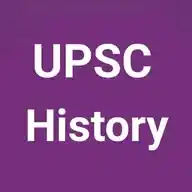
UPSC History Prelims Mains Notes Indian History World History UPSC History UPSC MCQs Quiz Pyqs
February 1, 2025 at 06:15 AM
🛡️ *Development of education in British India*
♟️Initially, the British East India Company was not concerned with the development of the education system because their prime motive was trading and profit-making. To rule in India, they planned to educate a small section of upper and middle classes to create a class “Indian in blood and colour but English in taste” who would act as interpreters between the Government and the masses. This was also called the “downward filtration theory”.
💎 *Under Company Rule*
♟️Calcutta Madrasah was established by Warren Hastings in 1781 for the study of Muslim law and related subjects.
♟️Sanskrit College was established by Jonathan Duncan, the resident, at Benaras in 1791 for study of Hindu law and philosophy.
♟️Fort William College was set up by Wellesley in 1800 for training of civil servants of the Company in languages and customs of Indians.
♟️British Parliament added a clause in the 1813 charter that Governor-General-in Council less than one lakh for education and allowed the Christian Missionaries to spread their religious ideas in India.
♟️Grant was sanctioned for Calcutta College set up in 1817 by educated Bengalis, imparting English education in Western humanities and sciences.
♟️The government also set up three Sanskrit colleges at Calcutta, Delhi and Agra.
♟️General Committee of Public Instruction, 1823 was formed to look after the development of education in India which was dominated by Orientalists
♟️Lord Macaulay’s Education Policy, 1835 was an attempt to create a system of education that educates only the upper strata of society through English.
♟️Persian was abolished as the court language and English become the court language.
♟️In 1849, JED Bethune founded Bethune School. Agriculture Institute was established at Pusa (Bihar). Engineering Institute was established at Roorkee.
♟️1835, 1836, 1838 : William Adam’s reports on vernacular education in Bengal and Bihar pointed out defects in the system of vernacular education.
♟️1843-53 : James Jonathan’s experiments in North-West Provinces (UP),included opening one government school as model school in each tehsildari and a normal school for teachers’ training for vernacular schools.
♟️1853 : In a famous minute, Lord Dalhousie expressed strong opinion in favour of vernacular education.
♟️Wood’s Despatch (1854): It asked the government of India to assume responsibility for education of the masses, thus repudiating the ‘downward filtration theory’, at least on paper.
It systematised the hierarchy from vernacular primary schools in villages at bottom, followed by
Anglo-Vernacular High Schools and an affiliated college at the district level, and affiliating universities in the presidency towns of Calcutta, Bombay and Madras.
It recommended English as the medium of instruction for higher studies and vernaculars at school level. It laid stress on female and vocational education, and on teachers’ training.
It laid down that the education imparted in government institutions should be secular.
♟️Developments-In 1857, universities at Calcutta, Bombay and Madras were set up and later, departments of education were set up in all provinces.